Are Custom IEMs worth it vs. Traditional IEMs?
Precogvision breaks down whether it makes sense to invest in a pair of custom in-ear-monitors versus tradition universal in-ear-monitors.
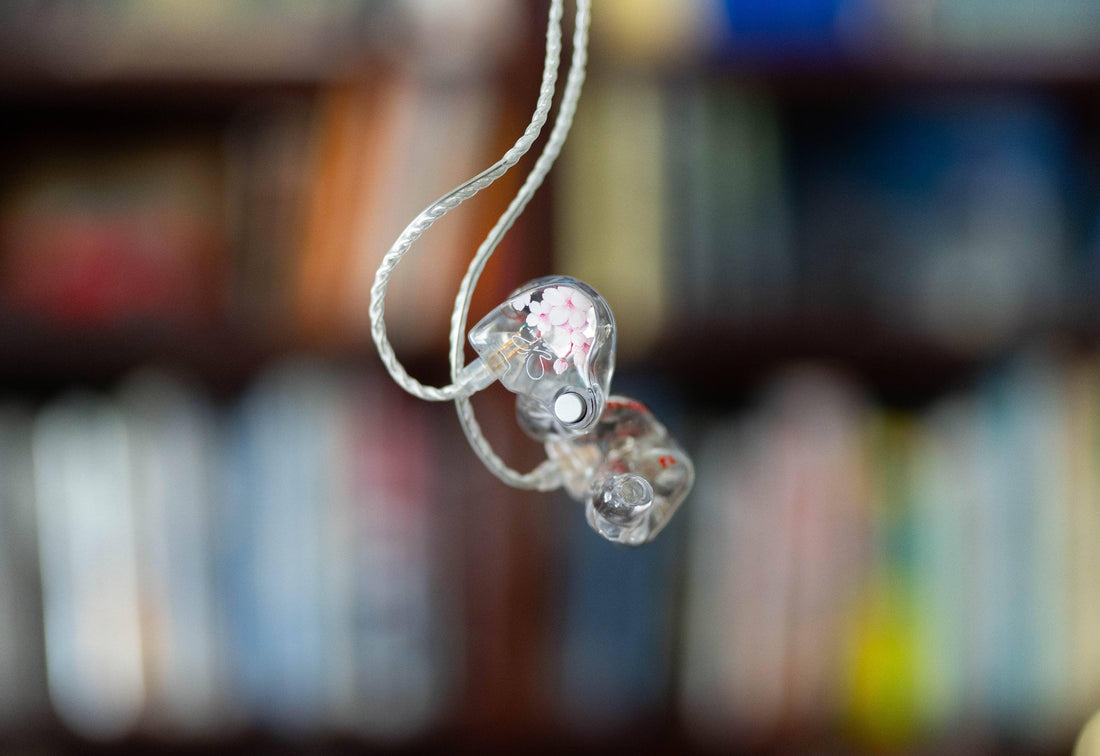
Introduction
You’ve probably seen your favorite artists wearing them - those fancy earpieces, CIEMs (custom in-ear monitors) - when they perform on stage. But have you ever wondered about what it’s like actually wearing one? And did you know that many audiophiles purchase CIEMs for personal use?
As someone who owns multiple CIEMs, I’ll be breaking down the pros and cons of owning CIEMs and how they differ from UIEMs (universal in-ear monitors) and which one might be for you. Follow along whether you consider yourself a complete layman or a seasoned audiophile!

Artist: Eric Nam
The Difference
First, let’s break down the difference between CIEMs and UIEMs. Universal in-ear monitors (UIEMs) are probably what you’re more familiar with. They’re IEMs that are manufactured, often in bulk, with the intention of being worn by anyone. Comparatively, CIEMs are crafted on an individual basis to one person’s unique ear anatomy. They don’t use ear tips, they often sport unique aesthetic features, and they’re not readily purchasable.
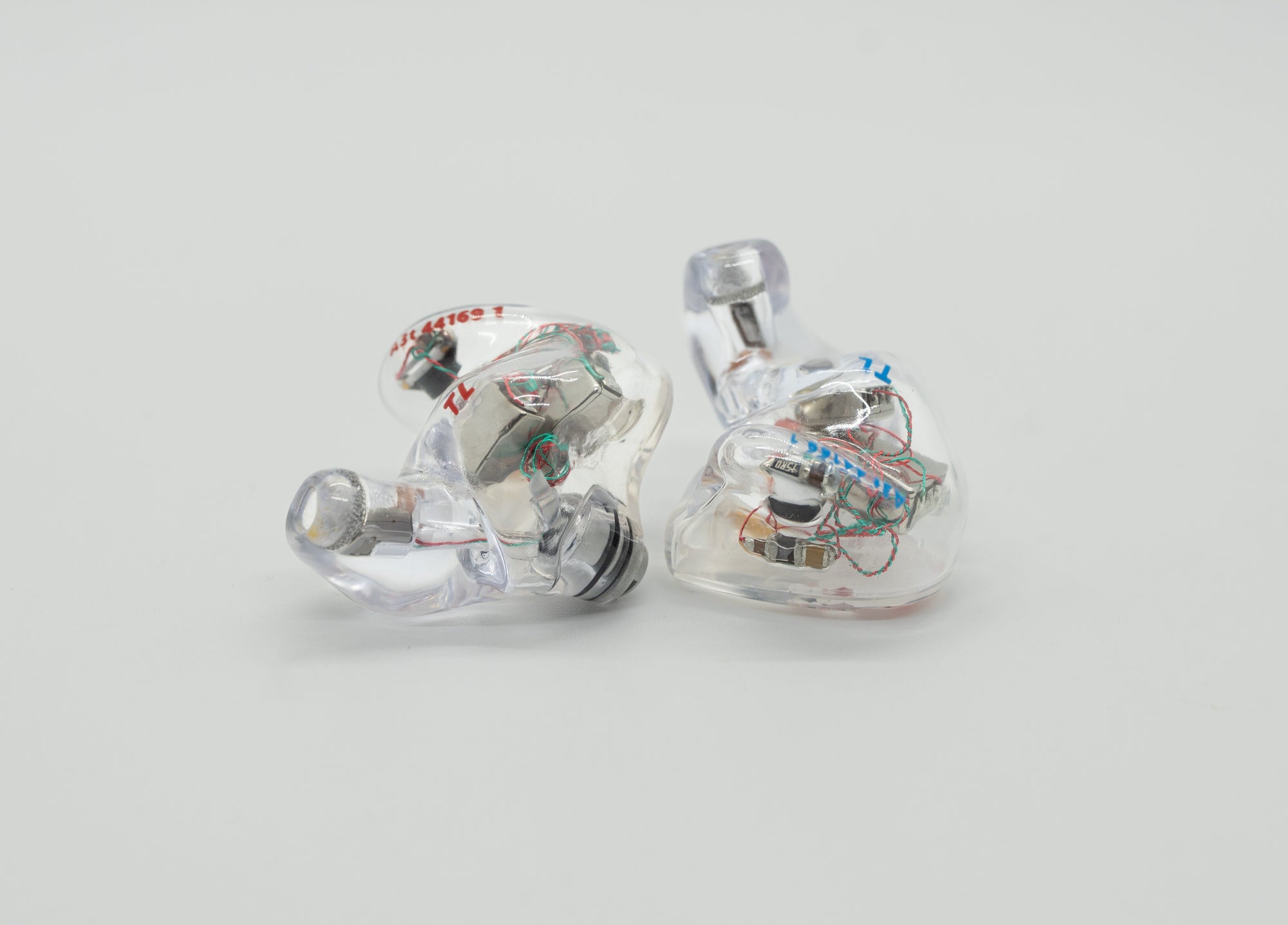
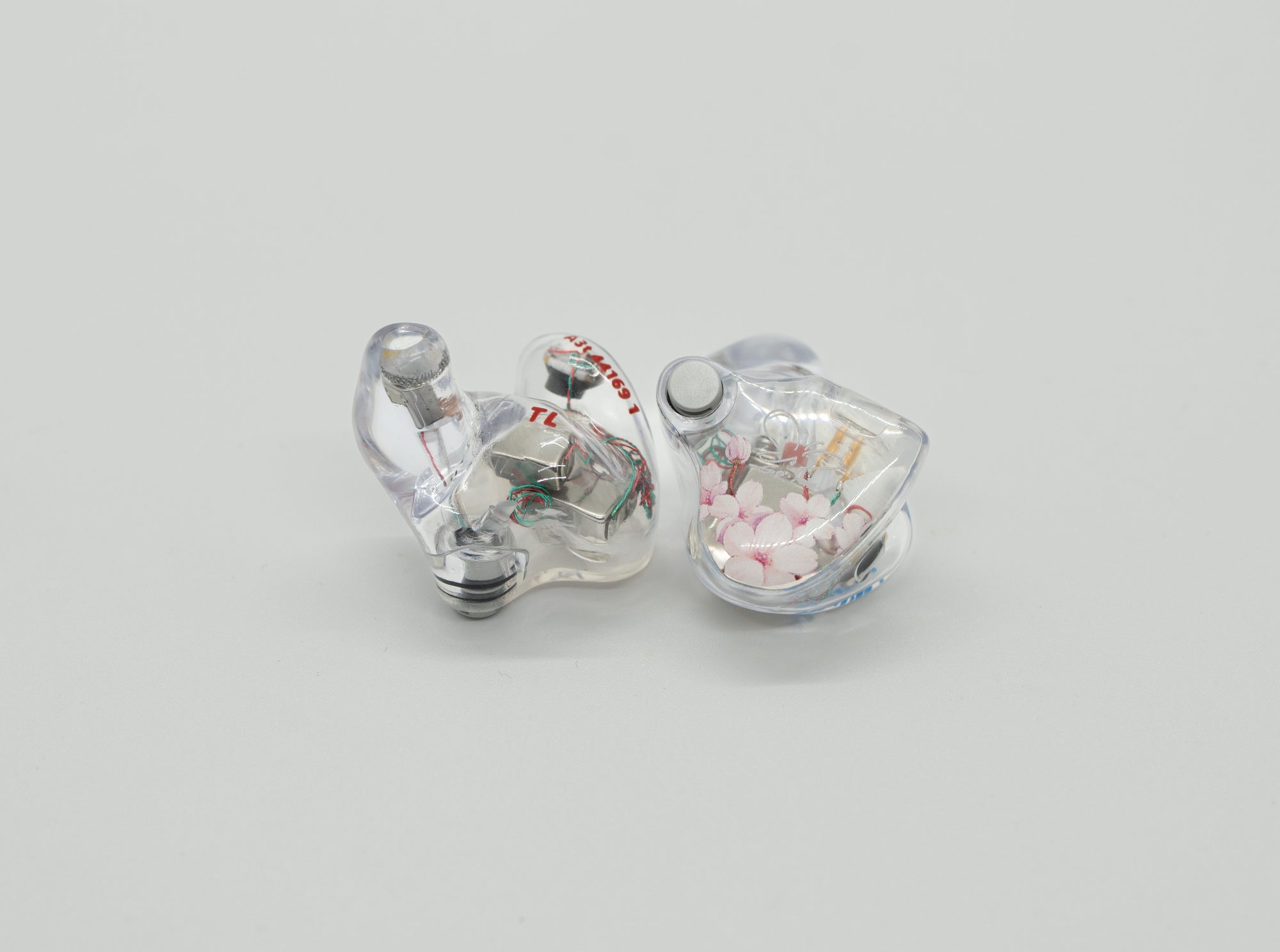
CIEMs don't use ear tips and they have one-off shell ergonomics because they're for one person!
So how do you order a CIEM?
CIEMs are crafted to your unique ear anatomy, so you need to get impressions (molds) of your ears first. I’ve had my ear impressions taken a couple times, and I would make sure that the person taking your impressions - usually an audiologist - knows what they’re doing. My first set of ear impressions from the audiologist I went to ended up being taken incorrectly (this also happened to my friend who used the same audiologist).

My second set of impressions were done by the audio store Zepp & Co in Singapore, and they did a much better job. If you haven't had ear impressions taken before, it can be a somewhat awkward first experience. The general process of getting ear impressions goes like this:
- Ears are checked to make sure there is no wax buildup.
- A foam stopper with string is inserted deep inside your ear canal to eventually remove the impression material that will be shot inside.
- You'll bite down on a block. This is to ensure your ear canals expand optimally.
- Impression material is shot into your ear canal. It's cold and will block out almost all sound.
- The material takes the shape of your ear and hardens.
- The foam stopper is removed with the piece of string, thus also pulling out the material.
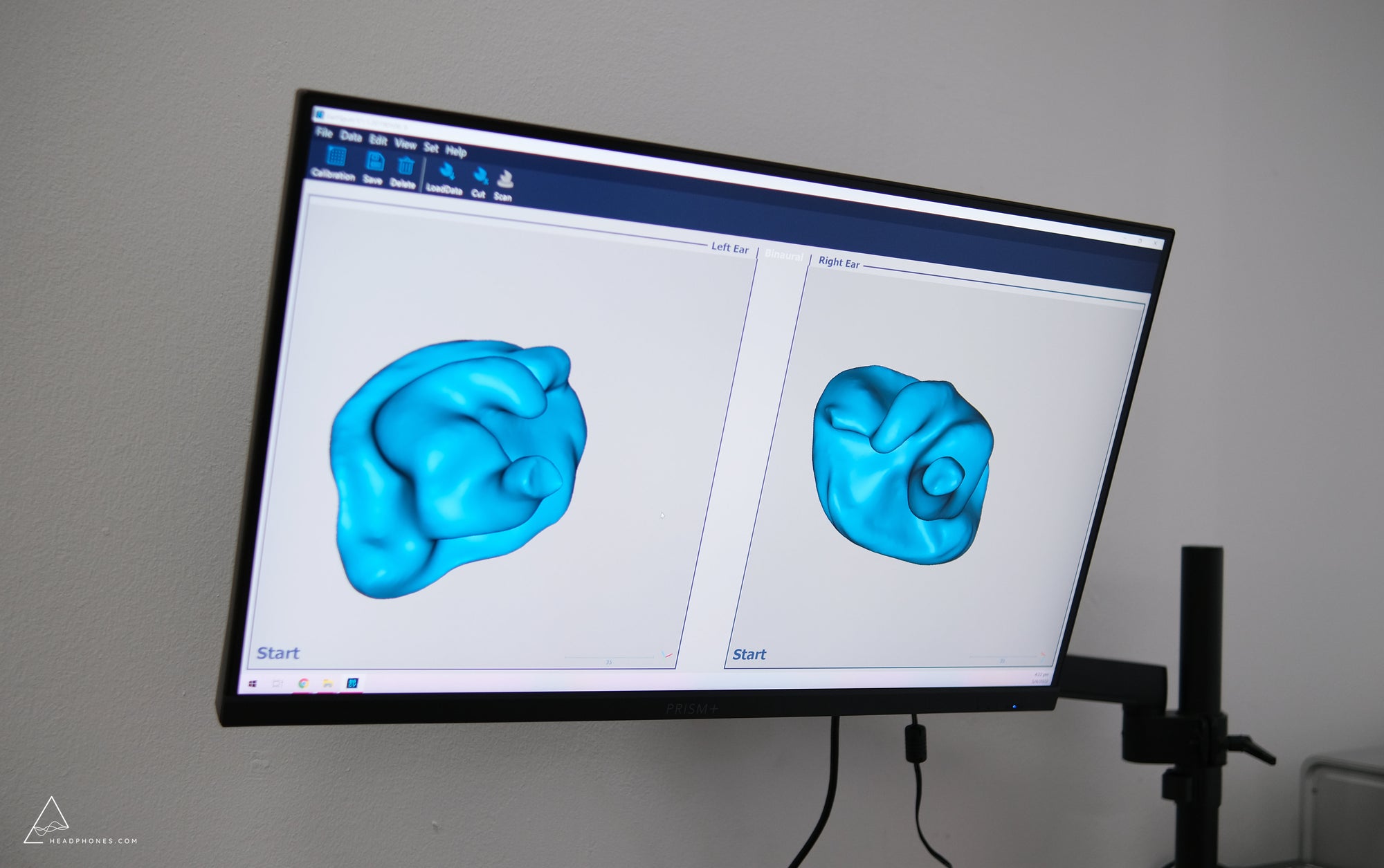
I was also able to get my second set of impressions digitally scanned. There are scanners and software specifically designed for this purpose. The software smoothes out small aberrations in the mold and creates a digital STL file of the shape. This file can then be used by any manufacturer that uses 3D printing to make their CIEM shells, so you don't even need to send out the physical mold in the future.
Depending on the manufacturer you’re buying from, though, you might need to mail out the physical ear impressions to them. From there, it usually takes several weeks for them to produce the actual CIEM and mail it out to you. If you receive your CIEM and it doesn’t fit correctly, a manufacturer can often make small adjustments to help it fit better. But if it doesn’t fit at all, you’ll need to get another pair of ear impressions and repeat the process.
Advantages
A common sentiment that I see is that CIEMs have superior isolation to UIEMs. However, in my experience, the isolation with most CIEMs is comparable to UIEMs that do not have venting. With some CIEMs that have venting, like the 64 Audio CIEMs via the Apex modules, CIEMs can actually isolate slightly less than UIEMs that do not have venting. CIEMs with superior isolation to UIEMs are likely those that 1) do not have venting and 2) have a deep-fit rather than a shallow-fit.
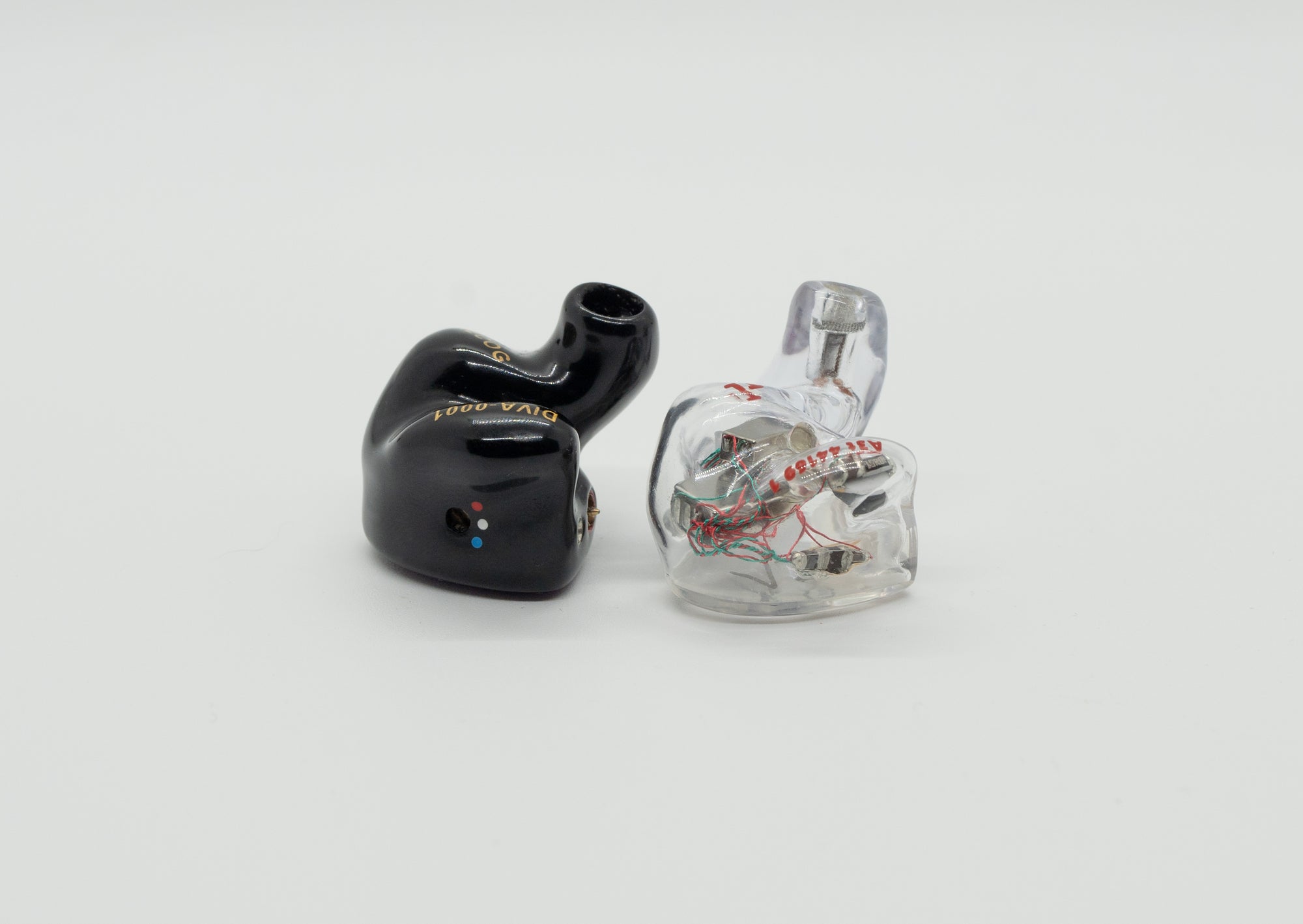
The Elysian Diva (on the left) has more of a shallow insertion, whereas the 64 Audio A3t (on the right) has a deeper insertion.
Along these lines, some manufacturers will offer a shallow-fit versus a deep-fit for CIEMs. I would always recommend going for the deep fit. It’s a lot easier for the seal to break with a shallow-fit because, unlike with UIEMs which have flexible, silicone ear tips to form a seal, you’re relying on rigid plastic/resin to hold the seal with CIEMs. This difference will be especially noticeable if you intend to lay down with your CIEMs or you turn your head frequently. Laying your head backwards squeezes your ear canals slightly which can push out a shallow-fit nozzle and break the seal.
The biggest advantage to CIEMs is really long-term comfort. By design, UIEMs aim to appeal to as many people as possible when it comes to fit in the ear; however, not everyone’s ear geometry is alike. There are many listeners, especially those with smaller ears, who will find that they struggle with UIEMs. By conforming to an individual’s unique ear, CIEMs are inherently more comfortable and all-day listening with them is quite possible (assuming everything goes correctly in the ear impression process). They are usually my go-to when I’m taking a flight because the chances of them falling out and onto the floor is near zero unlike my AirPods.
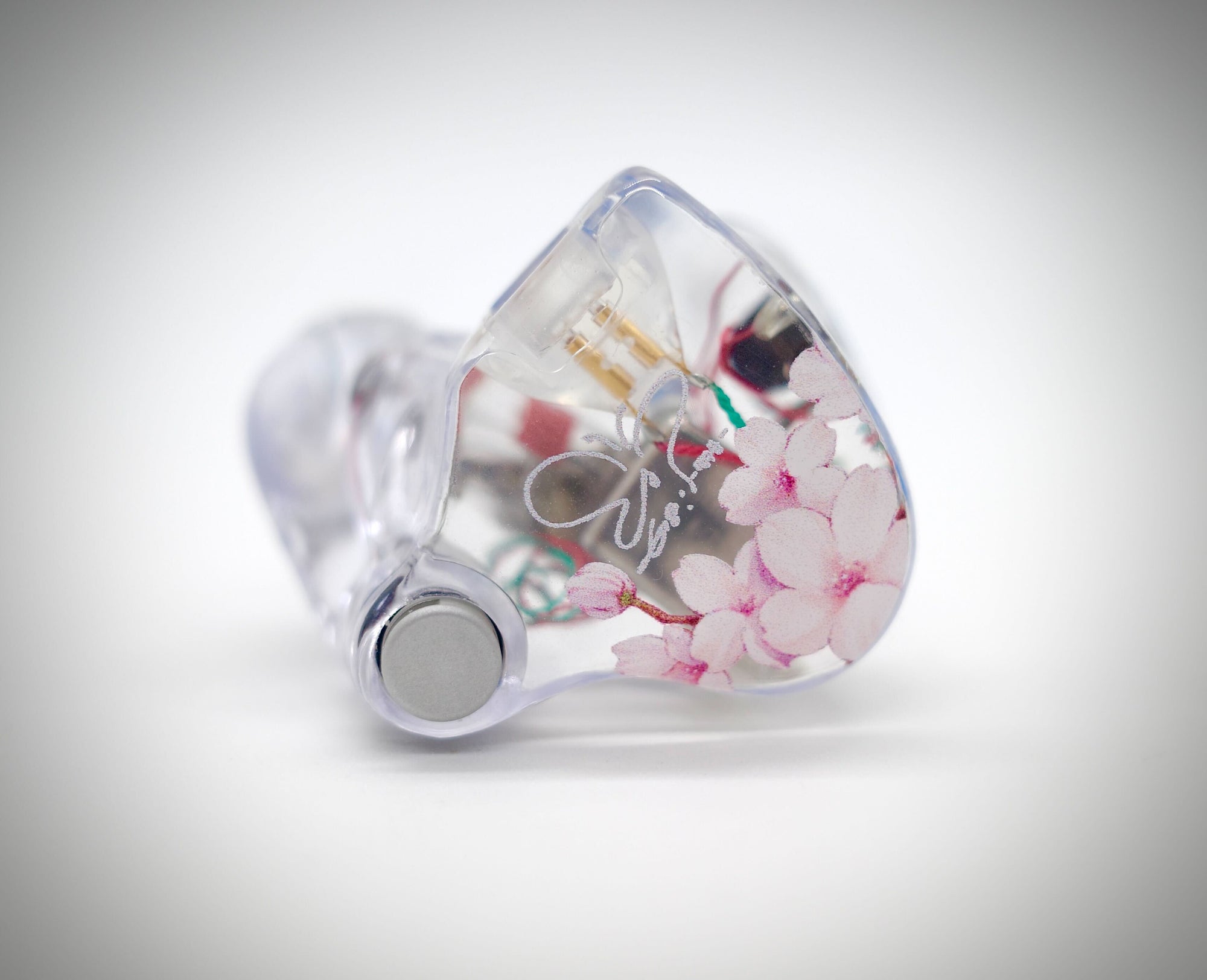
My 64 Audio A3t that I customized the faceplates for.
The final advantage to CIEMs is, of course, customization. Depending on the company that you purchase your CIEM from, they may have different options when it comes to how you configure your IEM. My personal benchmark for customization is 64 Audio’s tool where you can play with thousands of combinations to get an idea of what’s possible.
But this isn’t where it stops depending on the lengths you’re willing to go. If you look hard enough, there are private makers that do the most impressive customizations that I’ve seen:
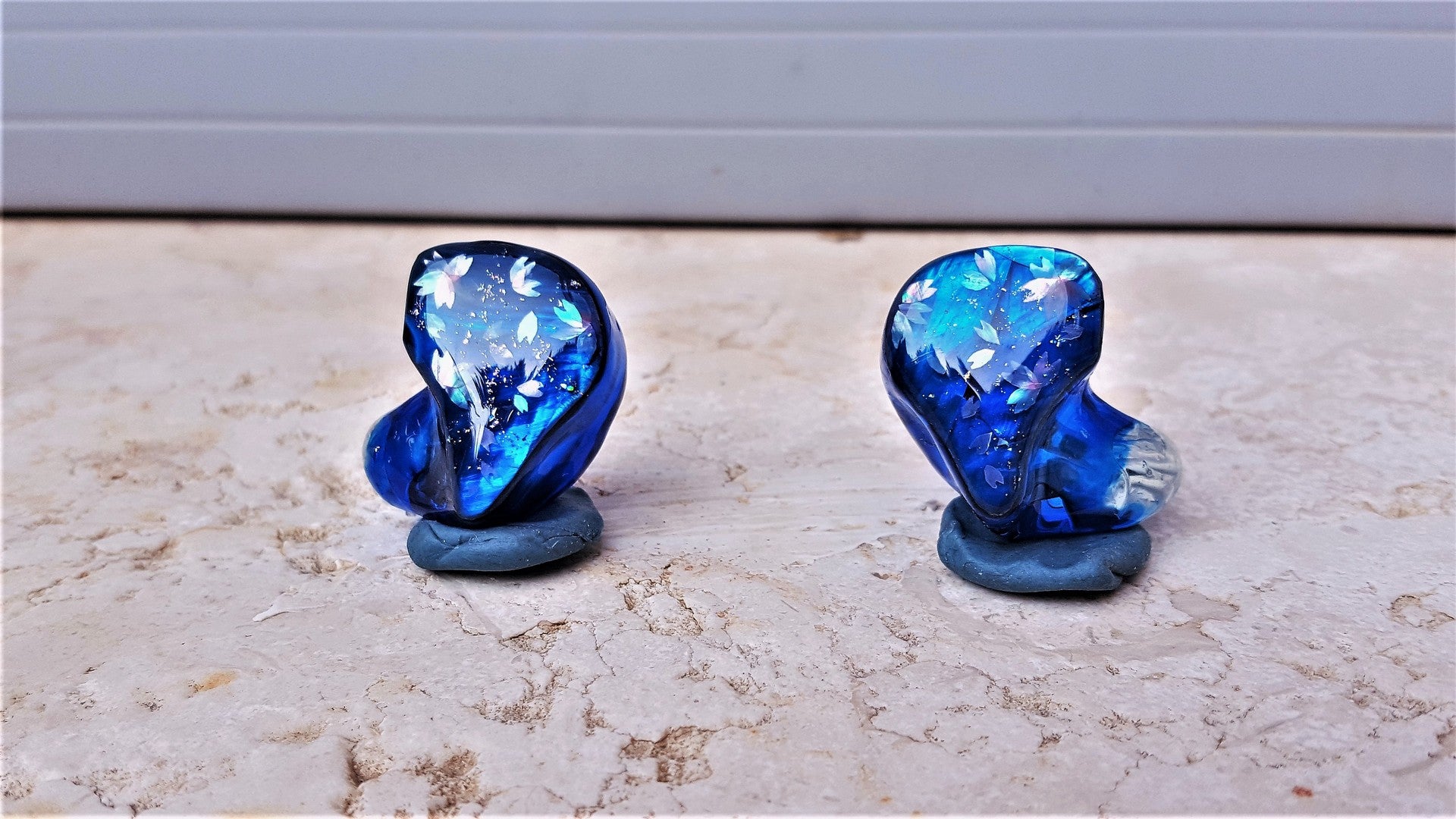
This CIEM was made by "Fix" and the photo was taken by him.
Disadvantages
There’s a lot to unpack here.
One of the biggest reasons why you might not want to purchase a CIEM has to do with the sound itself: CIEMs almost never sound like their UIEM counterparts. The ear has natural resonances that influence the frequency response of an IEM. This is similar to the 8kHz resonance peak that is commonly seen with measurements from couplers like the IEC-711. In many cases, that peak also exists to some degree in the ear. A CIEM is inserted deeper than a UIEM, though, so the peaks are often shifted higher upwards in frequency (and you’ll observe the same if you insert an IEM deeper into an IEC-711 coupler).
Measurements of the Elysian Diva at different depths on the coupler to illustrate the influence on the treble response.
Very few manufacturers adjust the tuning of their CIEMs to compensate for this; either way, it’s unrealistic to expect CIEMs to sound identical to UIEMs. As a general rule, you can expect CIEMs to sound more bassy and more dark relative to UIEMs. And because subjective qualities like ‘resolution’ and ‘soundstage’ are often predicated on the upper-treble frequencies, it’s common to find that a CIEM performs weaker in these departments relative to a UIEM of the same model. The rare instance against this difference is usually when the manufacturer has tuned the CIEM first, such as in the case of the Hidition Viento.
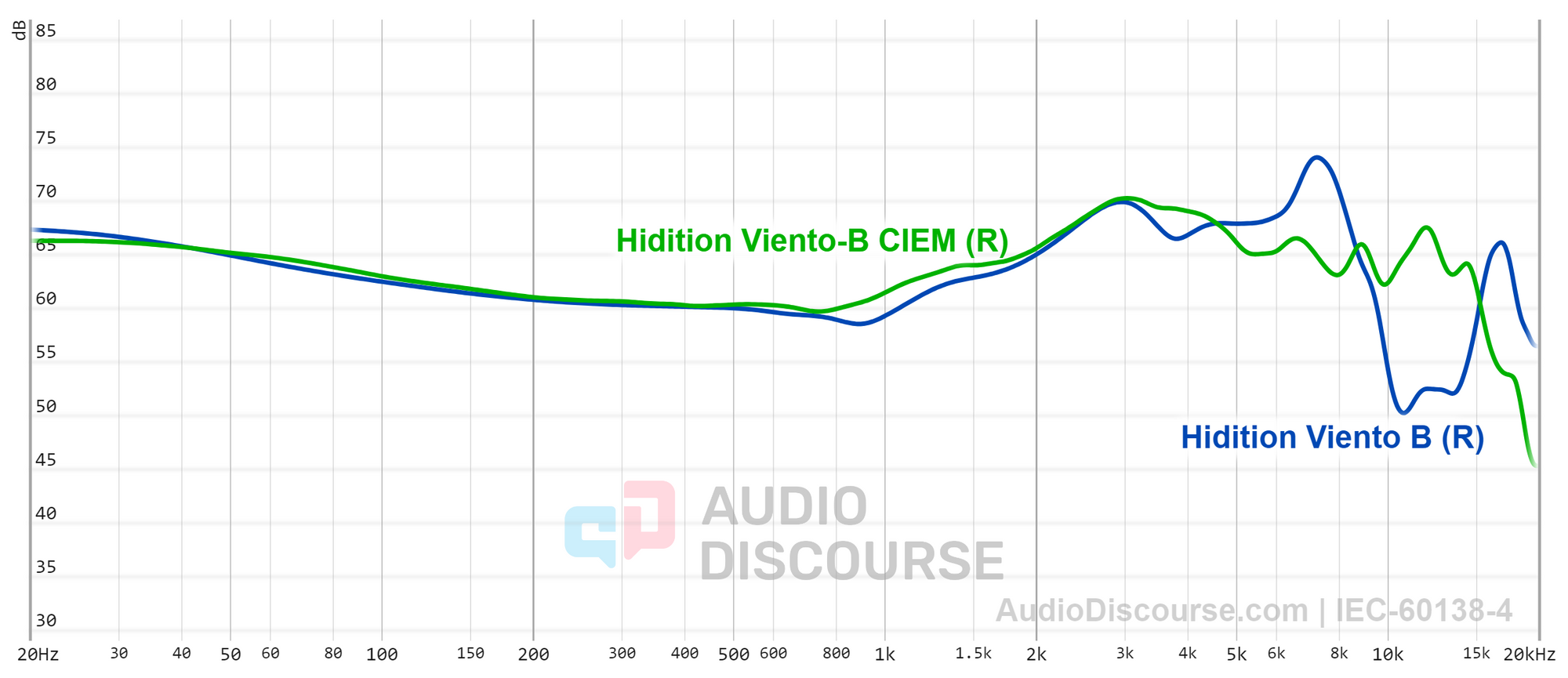
This is a graph of the Hidition Viento UIEM vs. CIEM courtesy of AudioDiscourse.com - note how the treble response of the Viento CIEM is noticeably smoother than on the UIEM.
Outside of the IEM itself, and delving into external factors, your ears can change with age which might necessitate a refitting. Anecdotally, I know someone who purchased a CIEM when they were 16 years old. When I saw them a couple of years later, and they had hit puberty, they told me that the CIEMs no longer fit them at all.
This is probably a more extreme example; however, other factors can influence the size of your ear canal. The most probable one would be weight. If you have a large fluctuation in weight, it could possibly affect the seal of your CIEMs. Temperature is another factor. In warmer climates, or when you exercise, your body expands which could make getting a seal with CIEMs easier versus somewhere that is colder.
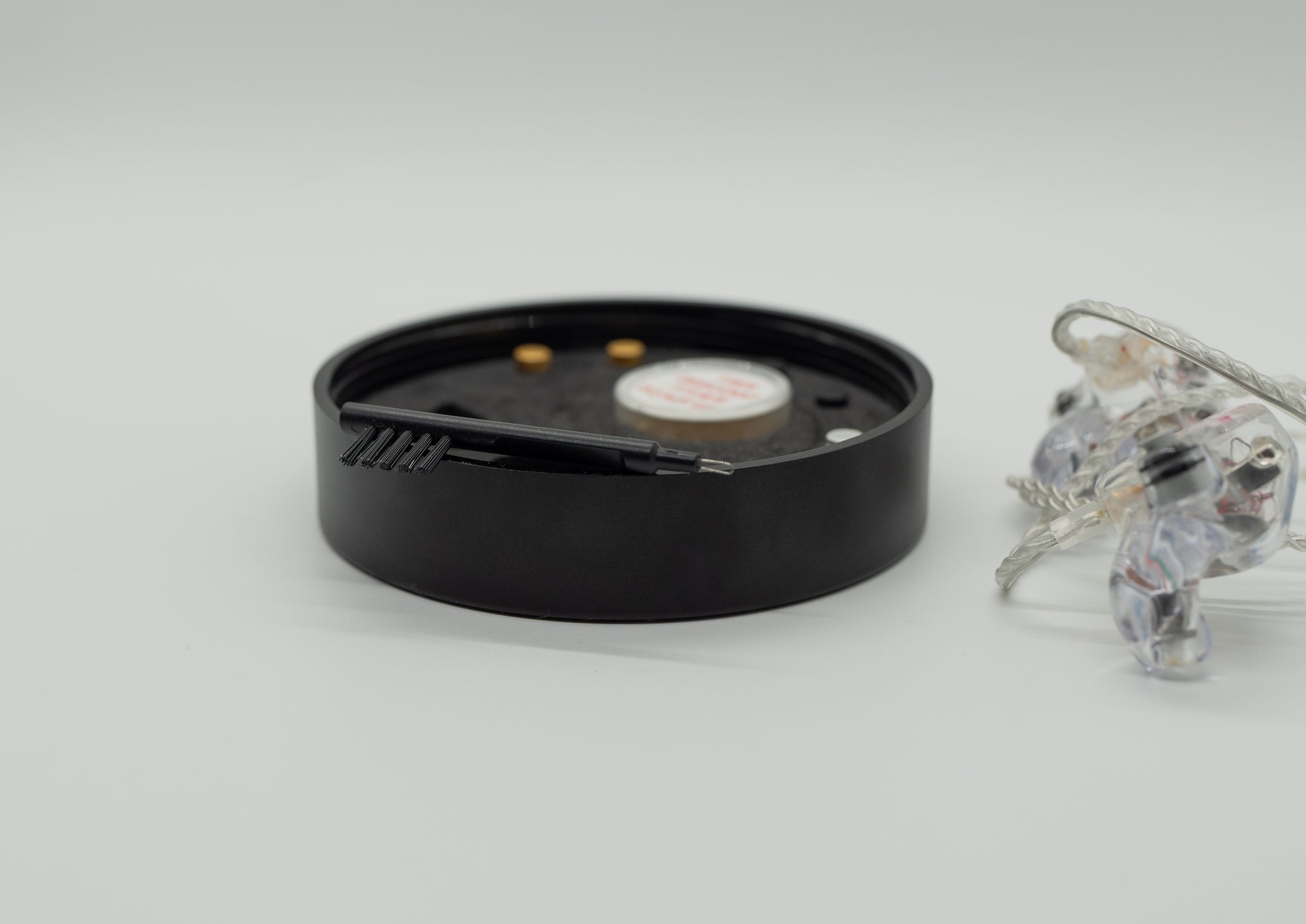
This tool is going to be your new best friend if you buy a CIEM.
Finally, here are some more miscellaneous drawbacks:
- Due to CIEMs sitting deeper in the ear canal, and not requiring ear tips, they are more prone to picking up ear wax which means more frequent cleaning.
- If you’re someone who often gets new toy syndrome, you’ll be disappointed to learn that CIEMs don’t hold their value very well. If someone purchases your CIEM, they’ll have to get them re-shelled because your CIEMs won’t fit them by default. Additionally, not all manufacturers offer re-shelling services. This leads to sellers letting go of their CIEMs for significant losses.
- Similarly, if you enjoy sharing your IEMs with friends so they can try them out, this isn't go to work with CIEMs.
The Bottom Line
Obviously, I am not a musician; if you are one, you may find that CIEMs have more utility for your use cases. But there are a lot of reasons why CIEMs are not the best choice for most audiophiles. I say this as someone who owns three CIEMs and has regretted, to some degree, purchasing each of them when I compared them to their UIEM counterparts. That being said, I don’t have issues fitting most IEMs in my ears and I understand the allure of designing something that’s personalized to you.
